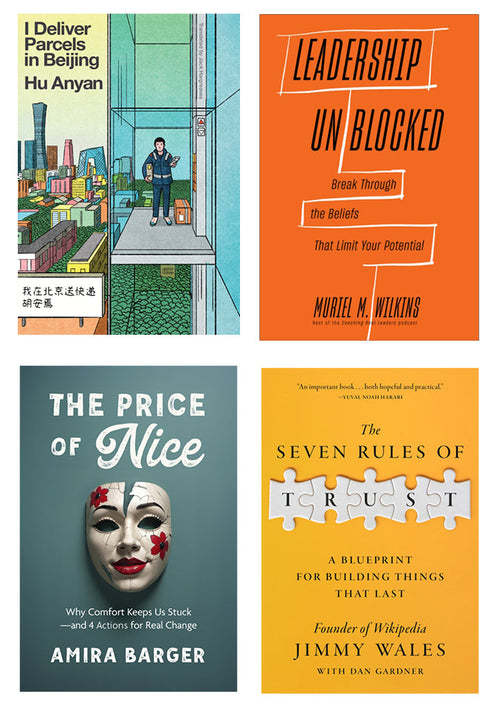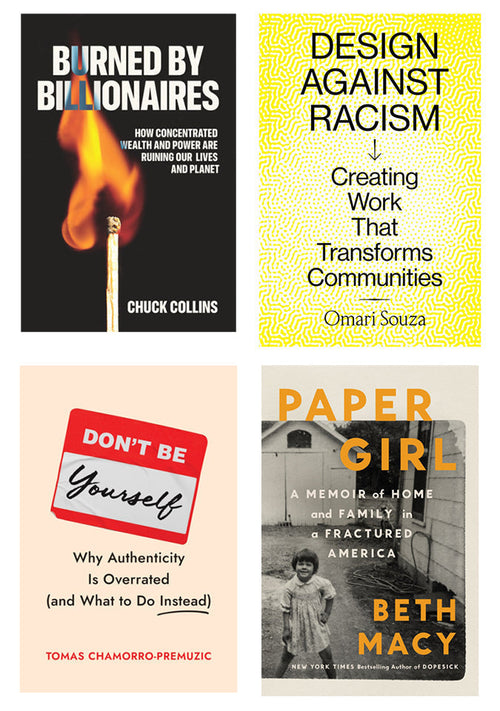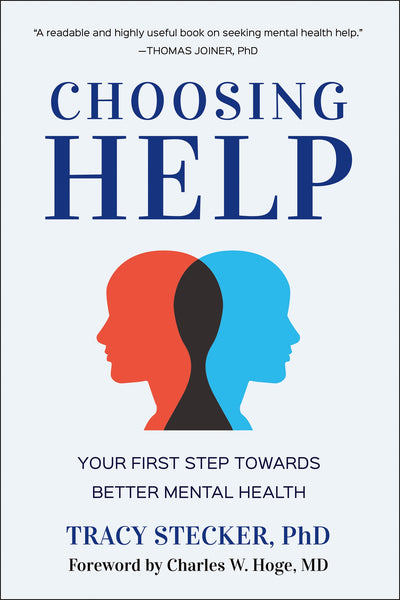Books to Watch | June 9, 2020
Each and every week, our marketing team—Marketing Director Blyth Meier (BRM), Digital Marketing Specialist Gabbi Cisneros (GMC), and Editorial Director Dylan Schleicher (DJJS)—highlights five new books we are most excited about.
This week, our choices are:

Building Brand Communities: How Organizations Succeed by Creating Belonging by Carrie Melissa Jones & Charles Vogl, Berrett-Koehler
When faced with crisis, communities come together.
There's a lot I could write about the many crises our country is experiencing right now, many of which are the explosive results of decades of disconnection and discrimination that have been simmering (and silenced) for far too long. And I've seen the word "community" so many times in news articles and heard it from so many hopeful protest leaders that the word has become heavier and more substantial than "those living in proximity of the same place." Building Brand Communities by Carrie Melissa Jones and Charles H. Vogl sees the importance in the feeling of passionately being part of a community, and it applies this to the business world.
The book explores how experiences and situations create the deeper feeling of community for brands, which seems like a difficult topic to tackle (and read), but the authors write clearly and effectively, the trustworthy experts that they are. Building Brand Communities offers plenty of fascinating case studies (both successes and mistakes) from global brands like Etsy, Harley Davidson, Salesforce, Airbnb, and Sephora, and between these examples and beginning to understand the throughline of psychology between brands and real-world community engagement, I was more absorbed by the book than expected.
This is a comprehensive guide for brands to use at any step in their community-building. Whether you still need to gather a team or if you need help understanding what and how to measure your brand's effectiveness, you will find at least one chapter or worksheet helpful. However, I fully endorse reading the book in full, because it's very exciting to see how each team member and each action or reaction comes together into a not-so-secret recipe for how to overcome mistakes to successfully "help members grow into who they want to be." (GMC)
Listen to a four-minute excerpt from the book.
Plus! Further brand-building reading below in my writeup for the new book Obsessed by Emily Heyward.
The Deficit Myth: Modern Monetary Theory and the Birth of the People's Economy by Stephanie Kelton, PublicAffairs
The conversation that has dominated mainstream economics for decades has been one of economic growth. Usually lost in that conversation is any concept of economic justice. If we are able to emerge from what has become a worldwide uprising for social justice and an end to institutionalized racism—happening in the midst of and on top of a global epidemic and economic depression—we need to change the conversation. Stephanie Kelton’s new book helps change it. She poses the question as it existed just a few months ago:
Whether the policy debate is health care, infrastructure, education, or climate change, the same question inevitably arises: But how are we going to pay for it?
Well, one very simple fact we've learned over the past two months is that our police departments have seemingly endless supplies of stun grenades and tear gas (not to mention other military equipment that we’ve all become almost accustomed to since we saw it roll out on the streets of Ferguson just six years ago), but our hospitals are woefully under supplied with personal protective equipment. Maybe we could start there? But we also know now that, when forced to by circumstances, the federal government can unleash trillions of dollars at almost a moment's notice. And, on a larger scale, using the lens of Modern Monetary Theory, Kelton shows us that there are no real financial constraints on the federal budget, and deficit spending is not only acceptable, but should be encouraged. Money is, on a larger scale, a social construct, and we can decide to enact policies that use it for social good. As she writes, “we can’t use deficits to solve problems if we continue to think of the deficit itself as a problem.” We no longer even have that luxury, and we have a lot of work to do. Let’s get to it. Let’s build the people’s economy. (DJJS)
Kelton has an op-ed in The New York Times today about how we can Learn to Love Trillion-Dollar Deficits.
Dreams of the Overworked: Living, Working, and Parenting in the Digital Age by Christine M. Beckman & Melissa Mazmanian, Stanford University Press
Talking with my brothers and the parents of my children’s friends lately, it is never among the first things that come up, but how we’re all managing the dueling demands of work and parenting in these times of uprising and epidemic has never failed to be a considerable part of the conversation before we say farewell and stay safe. Whether we’ve been laid off, deemed essential, or are working from home, it hasn’t been easy for any of us. And while it is not the most pressing concern we have as a society right now—or even the most pressing in the world of business and labor, with so many out of work and so many others having to work two or three jobs just to make ends meet—I can’t help but notice that the increased demands on so-called “professional” workers are real. It was real even before this all began, for workers across the economy. For “professional” workers, things were ramped up during the Great Recession amidst massive layoffs that left those still employed with extra responsibilities and the newly invented smartphones in their pockets made their work stretch around the clock. Rather than restructure the workplace as the economy recovered, it was left to workers to restructure their lives and come up with new “scaffolding” to support the extra demands. We’ve also too often bought into myths of being able to have and do it all ourselves through efficiency and self-improvement. As Christine Beckman and Melissa Mazmanian write in their new book:
Current obsessions with individual triumph in work, parenting, and self-improvement obscure the unsung yet equally essential need for community, collectivity, and help.
This book speaks most specifically to the lives of those in or aspiring to the professional middle class, but it explores broader societal structures, public policies, and community organizations, and challenges workplace norms and expectations that are applicable across the economy. Following the lives of nine real families, the authors deconstruct three myths: the myth of the Ideal Worker, the myth of the Perfect Parent, and the myth of the Ultimate Body. When we let go of these myths, “and the impossible ideals by which you judge yourself, and others, so harshly,” we can more clearly see the connected lives we’re all living and strive to make them all better. Restructuring work may not be our most pressing need, but enacting policies like paid family leave, universal child care, and before and after school programs, intersect with larger social and economic justice initiatives that will help us all. (DJJS)
You can learn more and read the book’s Preface at https://www.dreamsoftheoverworked.com.
Obsessed: Building a Brand People Love from Day One by Emily Heyward, Portfolio
No one means to make mistakes, especially when their company (and money) is on the line. That's why Emily Heyward's Obsessed subtitle "Building a Brand People Love from Day One" is so alluring. I think of the country's many small, local brands who have seemed to suddenly pop out of nowhere and start to appear in my social media feeds, on commercials, or physically in front of me on road trips (I'm thinking of the first time I saw a Sweetgreen and was overly excited and surprised to learn it was a chain restaurant, which immediately restored my faith in America's fast-food options).
Heyward highlights companies that have used their brand as "the ongoing, guiding force that drives how a business behaves," which involves a lot of work behind the scenes which she explains confidently from her position as the cofounder and chief brand officer at Red Antler, a full-service brand company based in Brooklyn. This book will inspire you to take a stand for your brand and what you believe in, which is something that is essential in our world today. Every interaction we have as a business is just as fragile and important as one we make as a friend, a neighbor, a human. Sure, it would be very cool to have your product be what has someone on Instagram newly #obsessed with your brand, but I hope we can also keep making new and similarly passionate connections with the people and ideas around us as we all continue to do our best in the world right now. (GMC)
Listen to the author interviewed on the Good Life Project about why she started her own business, her take on the power of storytelling, the success rates of full-time vs. part-time entrepreneurs, and more!
Sweet, Savory, Spicy: Exciting Street Market Food from Thailand, Cambodia, Malaysia and More by Sarah Tiong, Page Street Publishing
One of my ongoing food fantasies involves living in a neighborhood with a daily street market, at which I would pick up a crusty baguette on my way to work, and roam through on the way back home, picking out the freshest ingredients for dinner or simply nabbing a few bits of street food if I didn’t feel like cooking. Today, the local market of my dreams is in Southeast Asia, as I peruse the new cookbook from MasterChef Australia contestant Sarah Tiong. I imagine piles of fresh chilis, fragrant mangoes, leafy greens, overflowing bowls of spices, and every kind of sizzling meat on sticks. Close your eyes and picture “the sensual smokiness of noodles, fried over wok burners that look and sound like flaming rocket jets.” Yes, yum. Featuring recipes from across the region, but most specifically her mother’s home country of Malaysia, Tiong’s book embraces a broad range of cuisines without being a shallow overview. You’ll find barbecued meats and fruits, fresh salads, flaky breads, spicy sauces, sweet desserts and much more. From the first recipe (Malaysian Barbecued Chicken with Coconut and Turmeric) to the last (Malaysian Sweet and Savory Pancake Turnovers), Sweet, Savory, Spicy had my mental tastebuds captivated. I am looking forward to stocking up on lemongrass, coconut milk, shrimp paste, pandan extract, and two kinds of soy sauce so I can transform my Milwaukee backyard into a street market this summer! (BRM)
See how Sarah makes her Malaysian chicken satay at home in this video.
What we're reading away from work:
 "I'm reading Hawaii by James Michener. In it, he tells the story of the islands, its people, and how they became part of the United States. It's all about cultural identity and how fragile it really is."
"I'm reading Hawaii by James Michener. In it, he tells the story of the islands, its people, and how they became part of the United States. It's all about cultural identity and how fragile it really is."
—Roy Normington, Senior Customer Service Specialist
For a limited time, we’re offering free shipping on domestic mass mailings and waiving customization fees on bulk book orders—among other special offers.
















































